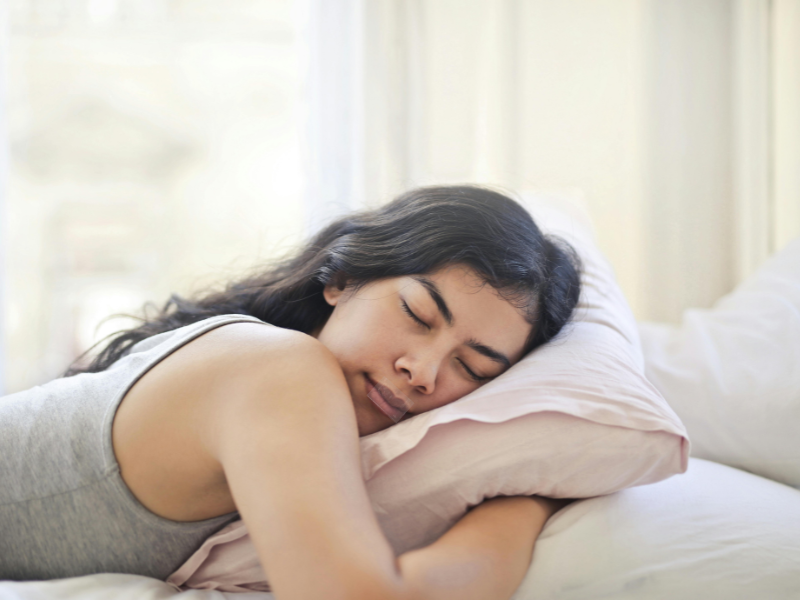Mouth taping is a practice that some individuals use in the hopes of improving their quality of sleep by encouraging nasal breathing. It involves the application of a small piece of tape over the lips to prevent mouth breathing during the night. Proponents of mouth taping argue that it can lead to better sleep patterns, may reduce snoring, and could potentially alleviate certain symptoms associated with sleep apnea.
The topic has caught the attention of sleep medicine specialists and stirred up various discussions around its efficacy and safety. Research into this subject is evolving, with medical professionals examining the potential health benefits or risks associated with mouth taping. While some studies suggest that nasal breathing can offer advantages, the practice of mouth taping during sleep is more controversial, with experts debating its validity and potential benefits.
Examining the scientific literature provides insight into how mouth taping might influence oral health, hydration, and the oral microbiome. Understanding the physiological impact of mouth breathing compared to nasal breathing reveals why changing such a fundamental aspect of respiration has become an area of focus for those interested in optimizing sleep quality. This scrutiny underlines the importance of thorough research and guidance from healthcare professionals before adopting new health practices.

I am a Nurse Practitioner licensed across multiple states, with experience in cardiology, nephrology, and family medicine. My current focus is on primary care, where I advocate for a holistic approach to healthcare, often recommending functional medicine to patients when suitable.
Mouth Taping: An Overview
Mouth taping is a burgeoning sleep wellness practice that has prompted discussions among health experts about its potential benefits and risks.
Definition and Purpose
Mouth taping refers to the practice of using a small piece of tape to gently keep the mouth closed during sleep. The primary purpose of this practice is to encourage nasal breathing, which is often associated with better sleep quality and improved oral health. Sleep medicine specialists cite that nasal breathing can humidify and filter the air, potentially offering advantages over mouth breathing during slumber.
History of Mouth Taping
The history of mouth taping for improved sleep is not well-documented; however, promoting nasal breathing has long been a component of various traditional health practices. In modern times, mouth taping gained attention through anecdotal reports and recommendations on social media and health forums. It has been discussed by healthcare professionals as a simple method to potentially manage snoring and sleep disturbances, although more comprehensive studies are needed to fully understand the efficacy and safety of this practice. Harvard Health discusses the lack of scientific backing for many social media health trends, including mouth taping for sleep, advising caution and further research into these practices.
Methodology of Mouth Taping Studies
The methodology of mouth taping studies determines reliability and applicability of the research findings. These studies typically adhere to stringent design principles and apply diverse population sampling strategies to ensure representative data.
Study Design Principles
In mouth taping research, study design principles encompass various aspects of the research framework. It is crucial that each study defines clear objectives and hypothesizes potential outcomes based on previous literature or preliminary data. The chosen design—whether it be randomized controlled trials (RCTs), observational studies, or case series—must align with the research question. For example, RCTs would provide high-level evidence of mouth taping’s efficacy by isolating variables and implementing blinded interventions to minimize bias.
Population Sampling Strategies
Population sampling strategies in mouth taping studies should reflect the population to which the intervention will apply. Researchers must consider and define criteria for inclusion and exclusion, ensuring a diverse and relevant cohort. Stratified sampling could be utilized to ensure subgroups, such as those with different severities of sleep-disordered breathing, are adequately represented. Moreover, they must calculate sample sizes that are statistically sufficient to detect meaningful differences or responses to mouth taping as a therapeutic intervention.
Physiological Effects of Mouth Taping
Mouth taping, a practice that has gained attention for its potential benefits, involves placing tape over the mouth during sleep to encourage nasal breathing.
Respiratory Changes
Mouth taping can lead to changes in respiratory patterns. By promoting nasal breathing, it increases the resistance to air flow, which can strengthen the diaphragm and possibly improve oxygen uptake. This practice may also influence the balance of oxygen and carbon dioxide in the blood.
Sleep Quality Improvement
Studies have shown a potential improvement in sleep quality with mouth taping. By reducing snoring and preventing dry mouth, individuals who tape their mouths may experience fewer sleep disturbances and better overall sleep. A Harvard Health article discusses this concept, cautioning readers to differentiate between anecdotal advice and scientifically backed recommendations.
Psychological Implications
The practice of mouth taping at night touches on the psychological facets of anxiety mitigation and personal sleep satisfaction.
Anxiety and Stress Responses
One aspect of psychological health impacted by mouth taping is the level of anxiety and stress a person might experience. A study featured by Harvard Health suggests that intentional nose breathing, which mouth taping may promote, can alleviate anxiety. The gentle facilitation of this practice reflects an aspect of controlled breathing, a technique often used in stress relief.
Subjective Sleep Experience
Individuals often assess their sleep quality based on their subjective sleep experience. A sleep expert at Loma Linda University News implies that nasal breathing, possibly encouraged by mouth taping, carries several benefits. These include the potential for improved sleep quality through better air humidification and filtration. One’s perception of a good night’s rest may be influenced by the physical comfort experienced while sleeping, though individual responses to mouth taping can vary.
Dermatological Considerations
When considering mouth taping as a solution to snoring, it is important to understand the potential effects on skin health and the safety of materials used in adhesives.
Skin Health Impact
The practice of mouth taping can influence the condition of the skin around the mouth. Adhesive-induced dermatitis is a risk for individuals with sensitive skin as the repeated application and removal of tape may lead to irritation. Non-breathable tapes also pose a potential for sweat accumulation, which might exacerbate skin issues.
Adhesive Material Safety
The type of adhesive material used in mouth taping significantly affects its safety profile. Hypoallergenic tapes are recommended to minimize allergic reactions. Moreover, the Harvard Health publication notes that not all tapes are designed for extended skin contact, raising concerns about the potential for long-term skin damage. Choosing the right adhesive requires careful consideration to avoid harmful effects.
Mouth Taping in Therapeutic Use
Mouth taping, a practice that has garnered attention for its benefits in certain therapeutic settings, may offer relief for individuals struggling with snoring and sleep apnea. It is also explored as a tool in speech therapy applications to guide patients towards improved oral function.
Snoring and Sleep Apnea
Individuals who experience snoring or sleep apnea may find mouth taping a simple yet effective measure to encourage nasal breathing during sleep. This technique can aid in reducing the frequency of snoring episodes and improve oxygen saturation for those with mild forms of obstructive sleep apnea. A sleep medicine specialist at Loma Linda University highlights that nasal breathing has several advantages during sleep, including better humidification and filtration of the air.
Speech Therapy Applications
In the context of speech therapy, mouth taping may be used under professional supervision to promote appropriate oral placement and enhance articulation. It helps patients focus on tongue position and encourages nasal breathing, which is crucial in producing certain speech sounds. Speech therapists may integrate mouth taping as one component of a broader therapy plan, emphasizing its role in reinforcing proper speech mechanics.
Efficacy of Mouth Taping
Mouth taping has garnered attention as a simple intervention for improving sleep quality by encouraging nasal breathing. Studies have begun to assess its effectiveness relative to other interventions and over extended periods of use.
Comparative Studies with Other Interventions
Comparative research suggests that mouth taping may benefit some individuals seeking to enhance their nighttime breathing patterns. For instance, sleep medicine specialists note that nasal breathing can improve humidification and filtration of inhaled air. A study referenced by Loma Linda University Health indicated potential benefits in sleep quality when mouth tape is used, yet emphasized the necessity for further comparative studies with existing sleep interventions.
Long-Term Efficacy and Compliance
The long-term impact of mouth taping on sleep remains a topic of ongoing research. Patient compliance is a critical factor in these studies, as the perceived discomfort or inconvenience of mouth taping can affect its consistent use. Harvard Health cautions against unfounded medical advice, suggesting that the long-term efficacy of mouth taping for conditions like snoring requires more rigorous scientific evaluation to determine its validity and safety.
Potential Risks and Complications
While mouth taping may offer benefits for certain individuals, it is important to consider the potential risks and complications inherent in this practice. The following subsections detail specific concerns related to emergency response and contraindications for patient selection.
Emergency Response Concerns
In the event of an emergency, such as respiratory distress or acute medical issues, mouth taping can complicate the ability to breathe efficiently. Individuals who tape their mouths shut may struggle to remove the tape quickly, hindering swift airway access. This is a significant concern for those who might experience conditions such as nocturnal panic attacks or asthma exacerbations.
Contraindications and Patient Selection
Certain conditions may preclude some patients from safely using mouth taping. Patients with:
- Chronic nasal congestion
- Obstructive sleep apnea
- Severe asthma
should avoid mouth taping without medical consultation. Additionally, individuals who are prone to sleep apnea or mouth breathing due to anatomical variations must approach mouth taping with caution and seek professional guidance, as it may ultimately exacerbate their condition.
Patient Education and Guidance
Proper patient education and guidance are crucial for the safe adoption of mouth taping, a technique advocated to help manage snoring. It involves the careful instruction on and demonstration of correct application methods to minimize risks.
Instructional Approaches
Healthcare providers must ensure patients are given comprehensive oral and written instructions on mouth taping. These should include contraindications, potential risks, and alternative snoring remedies. Using resources from reputable medical institutions, such as Harvard Health, can add credibility and depth to the educational material provided.
- Visual Aids: Diagrams and step-by-step guides.
- Demonstration Videos: For clarity on the technique.
- Follow-ups: Scheduled to address concerns and assess adaptation.
Self-Application Techniques
Patients need clear, concise guidance for self-application of mouth tape to avoid complications such as skin irritation or difficulty breathing.
- Skin Prep:
- Ensure the skin around the mouth is clean and dry.
- Tape Size:
- Cut or choose a piece of tape to cover the mouth without extending onto the cheeks.
- Placement:
- Apply gently over the closed lips, pressing down to secure.
- Removal:
- Peel off slowly from one end, keeping the skin taut.
It is imperative that patients practice self-application in the presence of a healthcare professional initially to ensure proper technique.
Ethical and Legal Considerations
In the context of mouth taping studies, it is crucial to examine the ethical and legal frameworks that protect participant welfare. Key considerations include the informed consent process and adherence to regulatory oversight and industry standards.
Informed Consent Process
The informed consent process for participants in mouth taping studies is paramount. Participants must be fully aware of the study’s purpose, the procedures involved, potential risks, and their right to withdraw without penalty. Details should be presented in plain language, and consent should be obtained in writing.
Regulatory Oversight and Standards
Mouth taping studies are subject to regulatory oversight to ensure they meet ethical standards. This includes compliance with laws and regulations that govern clinical trials, such as the Declaration of Helsinki and the rules set forth by institutional review boards (IRBs). Rigorous standards are enforced to safeguard participant health and privacy.
Future Research Directions
Future research in the field of mouth taping will likely explore the untapped potential of this sleep aid method, focusing on scientifically sound protocols and new technologies to ensure safety and efficacy.
Innovative Study Avenues
Researchers are considering longitudinal studies to assess the sustained impacts of mouth taping on sleep quality. They aim to recruit diverse populations to ensure the data reflects a wide range of experiences. Additionally, controlled trials comparing mouth taping to other interventions like CPAP machines could offer insights into optimal treatment pathways for sleep-disordered breathing.
Technological Advancements in Application
The development of smart mouth tapes equipped with sensors is anticipated, which could monitor the user’s breathing patterns and alert for any anomalies. Integration with sleep tracking apps could allow for real-time feedback and adjustments, potentially enhancing the benefits of mouth taping on sleep hygiene.
Frequently Asked Questions
The “Frequently Asked Questions” section provides insights into mouth taping—a method discussed for sleep apnea management and snoring reduction. This section explores its potential effects, risks, and professional opinions.
What are the potential benefits or drawbacks of mouth taping for sleep apnea management?
Mouth taping may encourage nasal breathing, which is beneficial for some sleep apnea sufferers. However, it is not a recognized treatment for sleep apnea and may have drawbacks such as skin irritation or discomfort.
How does mouth taping affect users of CPAP machines?
For users of CPAP machines, mouth taping can potentially cause complications. It is essential to consult with a healthcare provider before combining these therapies as it may interfere with the effectiveness of CPAP treatment.
Are there any health risks associated with mouth taping during sleep?
There are health risks associated with mouth taping, including the risk of suffocation if nasal passages are blocked. Additionally, it could lead to oral health issues if not done correctly.
What do medical professionals say about the effectiveness of mouth taping?
Medical professionals are generally skeptical about the effectiveness of mouth taping, as reported by Harvard Health. They urge caution and advise consulting with a health professional before trying this method.
Can mouth taping improve facial muscle tone, such as the jawline?
There is no scientific evidence to support the claim that mouth taping can improve facial muscle tone or change the structure of the jawline.
What types of mouth tape are recommended by dentists for nighttime use?
Dentists who support mouth taping often recommend using tapes designed specifically for this purpose, which are typically gentler on the skin and easier to remove.

